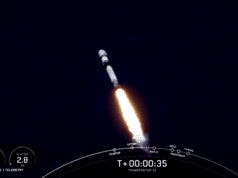A few months down the line, an entrepreneur wishing to invest in Andhra Pradesh can access the Internet to zero in on a geographical area of his interest or liking — where he wishes to set up an industry — and find out whether it falls under the `permissible area’. For the first time in the country, serious effort has begun to `map’ areas in the State where `developmental activity’ can be permitted keeping in view the long term plans of the State Government (Vision 2020). The focal point of the exercise is to ensure that industrialisation and related activities do not damage nor create imbalances in the existing environmental equation in that particular area.
The pathbreaking project has been taken up by the Hyderabad based Indian Resources Information and Management Technologies Limited (IN-RIMT). While the draft `mapping’ of Visakhapatnam district, where the State Government proposes to establish a pharma city, is being finalised, the project envisages similar mapping for 18 other districts in a few more months.
The zoning atlas project named “Industrial Pollution Prevention Project (IPPP)”, is being funded by the World Bank and handled through the Andhra Pradesh Pollution Control Board (APPCB). The first phase project cost is Rs. 70 lakhs for Vizag district, while the total project cost is Rs. 4.50 crores. IN-RIMT has been retained by APPCB to advise on the pilot project and to organise the rest of the project. Once mapping for the State is complete, IN-RIMT will implement web enabling and MIS/GIS connectivity.
The project cost includes hardware sourcing and establishing facilities at district headquarters, zonal and regional offices of the APPCB. The objective is to protect natural resources, avoid pollution, and make available information online to all district headquarters, zonal and regional offices of the APPCB. This will be made available to any department or individual interested.
The `Suitability Map’, as the end product is being called, is a combination of 31 layers (maps). It is a combination of air sensitivity, and surface water sensitivity, and will show at a glance where low, medium and high water and air polluting industries can or cannot be located.
Areas are marked to show combinations like high air but medium water pollution, or low air and high water pollution. From the suitability map, a strategically environmental analysis will be done. Maps identify sensitivity of receiving environment (land also) to pollutants. The project envisages creation and updating of resource data using remote sensing and GIS for managing the use of environmental and non-environmental resources by industrial investors and others on eco-friendly lines. When the State level map is ready, one can make out at a glance the extent of area as also locations in different parts, which are available for industrialisation — without disturbing environment and other factors.
Besides industries, the suitability map, is useful for several State Departments like agriculture, irrigation, public health, urban development, forest and environment sectors.




